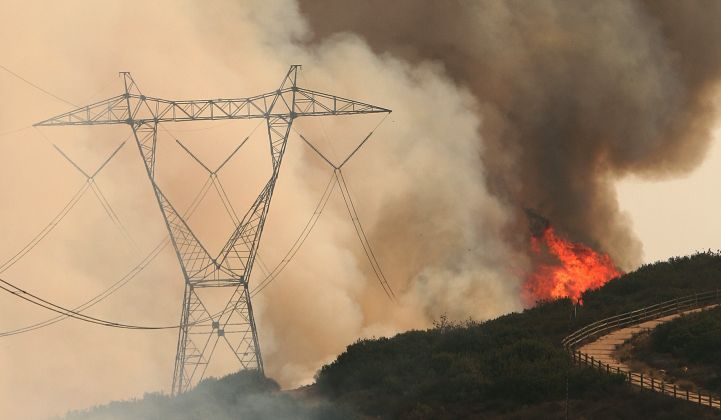California regulators this week launched an investigation into Pacific Gas & Electric’s massive fire-prevention power outages last month, both to assess whether the bankrupt utility should face millions of dollars in fines for its communication breakdowns during the events as well as to prevent future events from being as disruptive.
On Tuesday, the California Public Utilities Commission ordered PG&E to “show cause” as to why it shouldn’t face fines for its failures during its public safety power shutoff event of Oct. 9-12. The outage affecting 34 counties and an estimated 2 million people was marked by a breakdown in communications, including the crash of the PG&E website serving as the sole source of outage information for the public and city, county and state agencies alike.
PG&E also failed to coordinate with local governments and tribal communities before and during the event; what's more, it failed to plan for how its outages could require backup power for key infrastructure like highway tunnels or railroad crossings. All in all, the CPUC accused PG&E of an outage that was “ill-conceived, poorly planned, uncoordinated (both internally and externally) and ineffectively communicated.”
PG&E could face fines of up to $100,000 for each violation, which include its failure to contact about 23,000 customers, including 500 medically vulnerable customers, to inform them they were about to lose power. A prehearing conference to set the schedule for the order will be held on Dec. 4.
This week’s actions by the California Public Utilities Commission come amid a public outcry against PG&E’s outages last month, which this time left even more Northern California residents without power, some of them for days at a time. PG&E said the outages were needed to prevent live powerlines from sparking another deadly wildfire like November 2018’s Camp Fire, which killed 86 people and caused an estimated $14 billion in damages — damages that forced PG&E into bankruptcy early this year.
The CPUC ordered PG&E and the state’s other investor-owned utilities to start shutting off power last year to prevent a repeat of the deadly 2017 and 2018 fire seasons. But PG&E’s outages have been far more drastic, widespread and long-lasting than those conducted by San Diego Gas & Electric and Southern California Edison.
In an emergency hearing after the outage, PG&E executives promised CPUC commissioners that they would fix the breakdowns and improve its coordination with state and local agencies. But many of the counties and cities worst hit by the outages have told the CPUC that they doubt PG&E’s promises, given its failure to coordinate with them in the past.
The public outrage over PG&E's handling of its outages, combined with concern over its post-bankruptcy financial viability, has led a growing number of California leaders to call for a public takeover of PG&E’s assets. Gov. Gavin Newsom has floated the idea as an option, while publicly courting investment from Warren Buffett.
While PG&E remains the primary concern, California regulators are also taking a broader look at how the state’s other utilities, as well as critical infrastructure like cellphone service, have handled fire-prevention power outages. On Wednesday, the CPUC launched an investigation into all of California’s investor-owned utilities to ensure that fire-prevention power shutoffs “are only made when absolutely necessary and are based on actual and substantiated conditions.”
San Diego Gas & Electric, the acknowledged leader in effective fire-prevention shutoffs, has spent more than $1.5 billion over a decade on weather forecasting, tree-clearing, grid-hardening, circuit sectionalization, and other work that’s allowed it to tightly target its outages to single communities in fire-prone areas, for example. While PG&E’s investments in similar efforts allowed it to reduce the impact of last month’s outages somewhat, CEO Bill Johnson has also said it will be about 10 years before the utility will be able to take public safety power shutoff events off the table as a solution of last resort.




